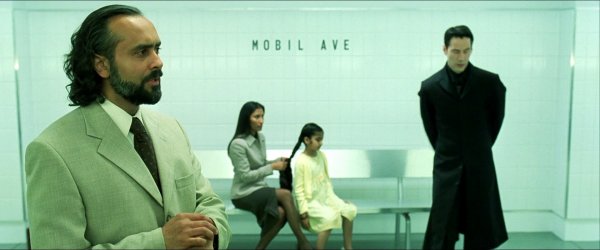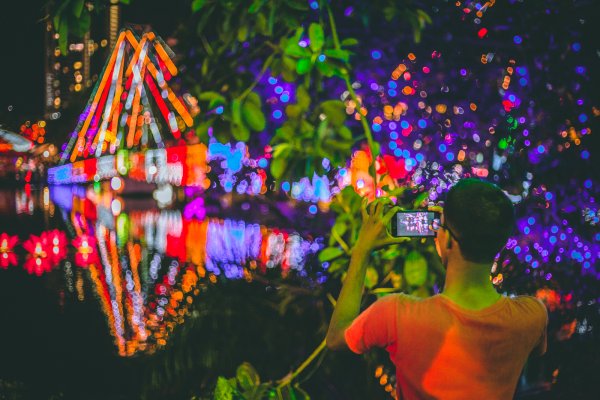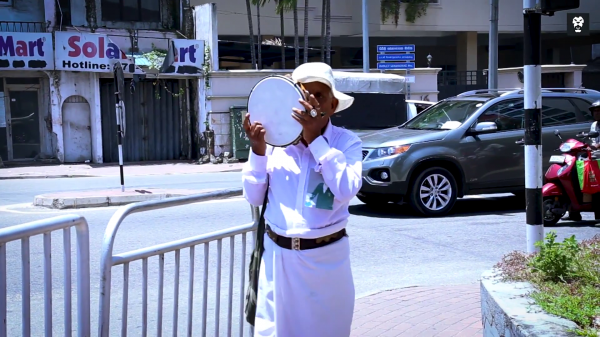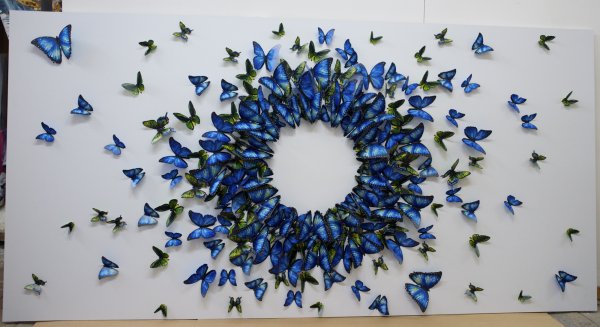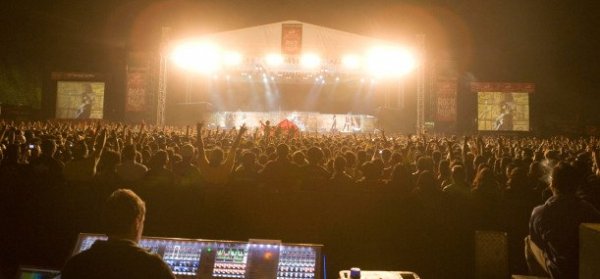
In Sri Lanka, baila, is a popular form of music. Originating with the ‘kaffirs’ (Portuguese cafrinhas—descendants of 16th-century Portuguese traders and African slaves), baila has carved a niche for itself in Sri Lankan music. But while baila, with it’s 6/8 beat and ‘peculiar jerky movement’ is wide-spread across the island, there exists a little-known offshoot, called vaada baila.
Where vaada baila differs from classical baila is in its performance, which is in the form of a lyrical debate. Multiple performers take turns to create and perform on the spot lyrical responses to topics thrown at them by the audience. Judges determine who performed the best, and medals are awarded to the winners.
A traditional vaada baila contest begins with a first-round, in which each contestant sings about the faith they believe in. This is followed by a round paying respect to parents, and a round paying respect to teachers. It is only afterwards, that the show really begins, and contestants are pitted against each other in an unrelenting lyrical meet.
Long before musical shows were a thing, vaada baila sessions were what people flocked to in Sri Lanka. As mentioned in Professor Sunil Ariyaratne’s book, ‘An Inquiry into Baila and Kaffrinna’, it wasn’t even uncommon at the time for the competitors’ ‘fixers’ to buy tickets in bulk in an attempt to fix the vote! Sometimes, this even led to stabbings.
Professor Ariyaratne’s book also tells us that in the early 60s, vaada baila programmes were broadcast on the Sri Lanka Broadcasting Corporation (SLBC). During that time, popular baila singers would be split into teams to debate burning topics of the day. These would include,‘The Cart or the Car?’, or, ‘The Western Doctor or the Sinhala Weda Mahaththya?’
Some of vaada baila singers popular at the time were Maradana W. A. Ruban Perera, Modara Justin, Ratmalana T. D. Gunathilake, Dematagoda B. Don Richard, Rajagiriya Marshall, Punchi Borella T. S.D. Siriwardena and Welikada Sunil Atapattu—who all followed the convention of taking as part of their names the localities they represented.
Of these, Punchi Borella T. S. D. Siriwardena, Dematagoda B. Don Richard, Rajagiriya Marshall and J. D. Sumanapala were probably the most well-know, are were often referred to as ‘Baila Masters’. Aspiring baila singers would come from far and wide to learn from these ‘Masters’, and the ‘Masters’ would be referred to with respect in the lyrics of the student.

Vaada baila in Sri Lanka has evolved greatly since its popularity in the 60s, and today, the undisputed champion of this musical form of debate is Percy Rajapaksha, who has been involved in the circuit for four decades. Rajapaksha, who has won numerous awards over the years, also runs a vaada baila school in Ratmalana, in the hope that the younger generation will take up the art.
“It’s easier for me when they come to us with the ability to put together some rhymes in their head,” he told Roar Media. “But we can still teach even if [they] don’t!”
Rajapaksha believes there are talented youngsters out there. “Some better than me,” he said. And maybe even better than his two daughters, Shashira and Shishara—possibly the first two women to grace the vaada baila stage in Sri Lanka.
Shashira started out when she was 11. Shishara followed at seven. In an interview with Dinamina, the sisters said they had started off with the help of prompts scribbled on pieces of paper. And at the time, it was their mother who wrote the baila stanzas for them. But as they grew, in size and confidence, they learned to perform and sing on their own.
In an interview with Tharunaya (Youth), Shishara related how they overcame their obstacles, “When we were on stage, people would come up and give us topics to sing about. We would be very helpless then, and stumble through it. [But] that way, with time we were able to develop an ability to sing live.”
Now the sisters have developed skills to the degree that they embark on frequent foreign tours—mostly to Europe.
What is most surprising is that it was their mother who was the most supportive of their career at first. Rajapaksha was reportedly apprehensive, fearing an adverse reaction to two young female singers. But their early success has relieved his fears and he has thrown his weight behind their careers.
It is also clear that vaada baila will not end with Shashira and Shishara. Shashira’s daughters Pruthivi and Rithuwi, at ages 14 and eight have also taken to the stage, and performed this year as part of the Travelling History Museum’s event ‘It’s About Time’ organised by historialdialogue.lk.
But despite the new promising talent, Rajapaksha feels vaada baila is an art form in crisis. “Very few are aware of it in this day and age and there are very few events and even fewer new artists,” he said.
He recalls a time decades ago when there were hundreds of vaada baila singers in the country, unlike the 30 or 40 staple artists that perform sporadically now. And while he believes the lyrical art form can be revived with more exposure, he feels mainstream media has left them behind. Still, Rajapaksha remains committed to the preservation of vaada baila.
“It would be a shame to lose such a dynamic and unique art,” he said.

